10 Funny Customer Experience Cartoons
Lessons Learned Through Laughter
Sometimes in the world of customer experience, we all just need to have a good laugh. Some situations can be frustrating, some downright ridiculous, and sometimes it goes so well it is actually surprising. Humor is a great way to ease tension, and there are plenty of cartoonists out there who capture the ups and downs of customer service perfectly. We hope you enjoy these as much as we do!
Workplace humor would not be complete without the snarky brilliance of Dilbert:

Dilbert has a long-running gag using the evil Dogbert as a tech support representative. He loves to give his customers bad advice on purpose. What is extra funny/not funny about this cartoon is that it highlights the “not my job” phenomenon in large organizations. When the customer is not at the center of process and operations, then they can be bounced around to different departments, making the experience time consuming and frustrating.
Lesson learned: Cross-functional training and customer-centric operations can provide a “one-and-done” service experience that benefits both customer and employee.
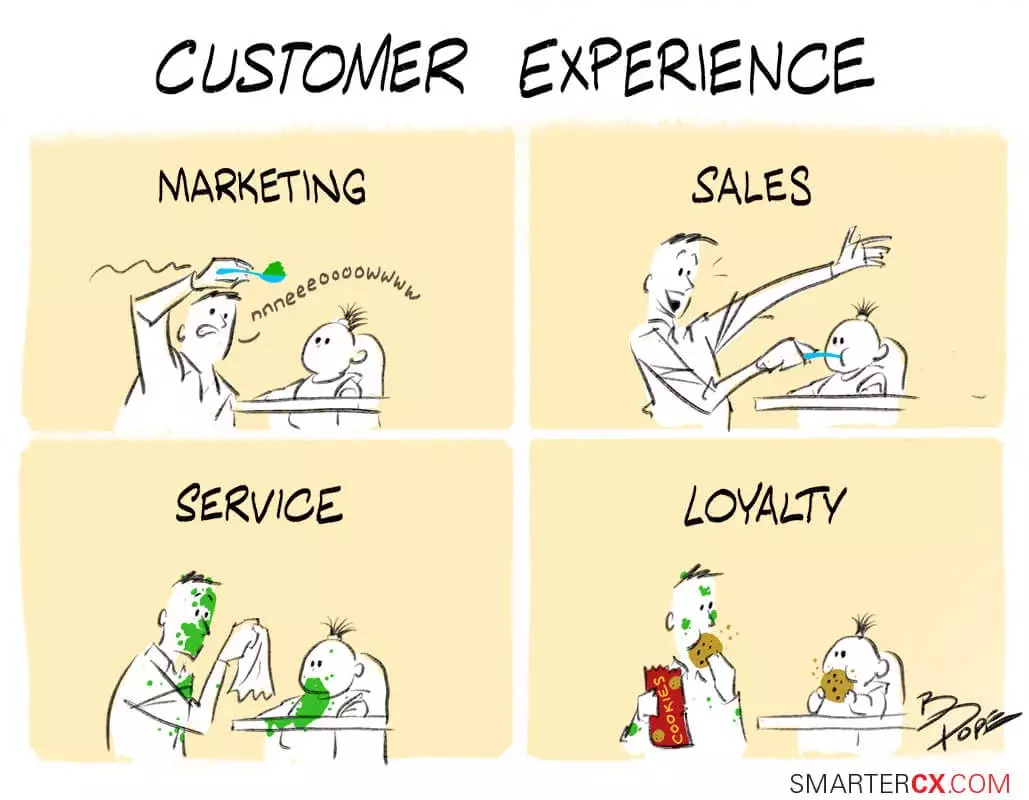
Loyalty is an amorphous concept that often gets bandied about but is actually quite difficult to achieve. This funny cartoon from SmarterCX.com shows a bit of bribery happening, which at the moment is sweet and easy, but obviously not sustainable for the long-term health of both parent and child.
Lesson learned: True loyalty cannot be bought. It has to be earned through consistent, holistic, customer-centric strategies throughout the marketing, sales, and service stages of the lifecycle.
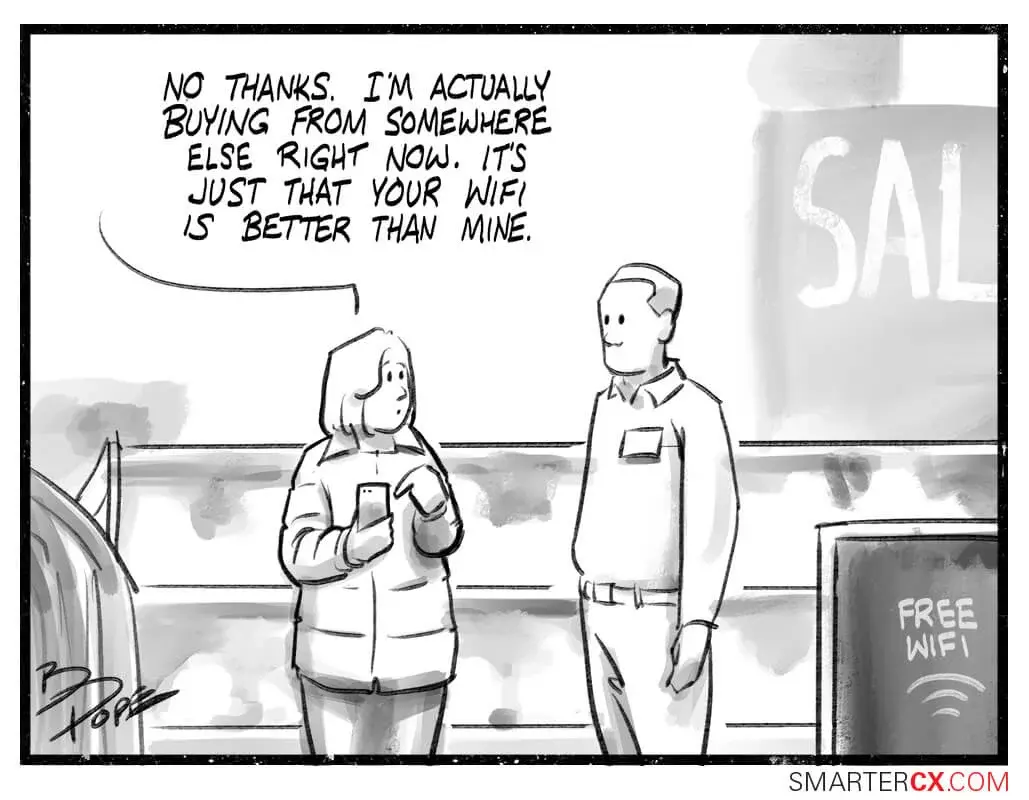
Another good one from SmarterCX.com, this cartoon shows the phenomenon of “showrooming,” where customers browse in the store, but then buy online. A study from the Kellogg School of Management revealed that “Among shoppers who said they engaged in showrooming, 40 percent reported that they actually never intended to buy online, but they were driven there after experiencing poor customer service and support in stores.” That’s a really shocking figure.
Lesson learned: It’s not enough to entice customers into your store though sales and gimmicks; if the service is sub-par, your customers will have no problem leaving and buying elsewhere.
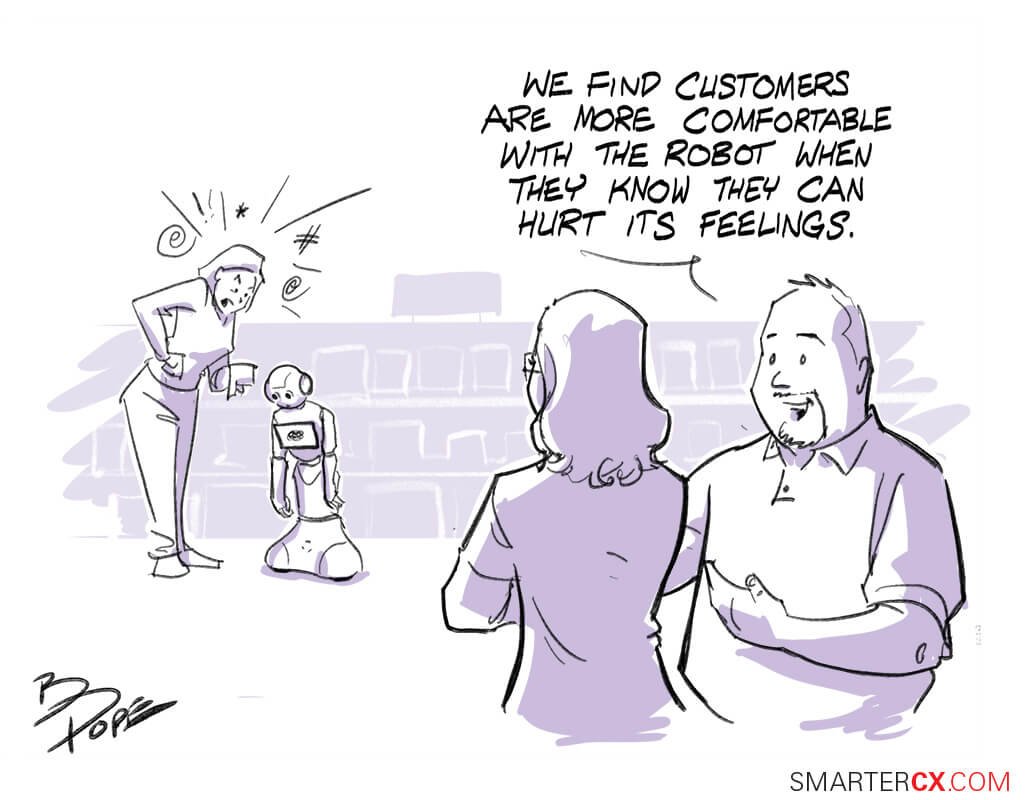
Unfortunately, customers who are already frustrated by going into a service experience are likely to express that frustration to the company representative. It’s funny to think about a robot being able to take verbal abuse, but in reality, chatbots and other automations tend to make the experience less personal. People say, “I want to talk to a human being!” not because they want to hurt their feelings but because they hope for empathy.
Lesson learned: deploy automation in a way that will benefit the customer and ease their path forward; don’t just do it because it will save you money on staffing.

The dreaded “please give me a 10 on the customer satisfaction survey” phenomenon has gotten so bad that some retail and automotive service representatives even pre-fill the survey for the customer. While it’s funny to think of Superman needing a good satisfaction score, this cartoon does point out the disparity between what people should be doing and what they are actually measured on. The saying in CX circles is “you get what you measure.”
Lesson learned: Begging for a good score is not only off-putting to the customer, but it’s also not giving the employee or the company a true measure of opportunities for improvement.
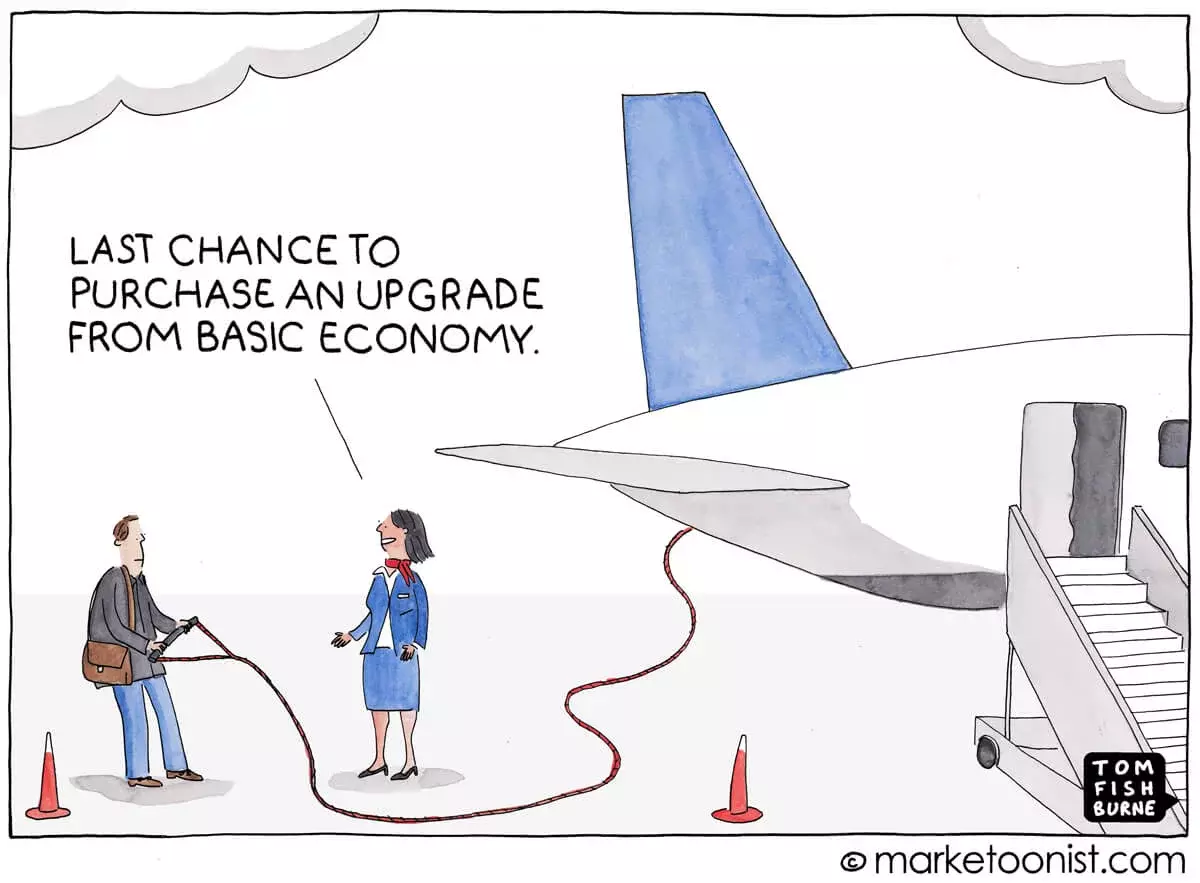
In another joke about how employees are measured, the concepts of cross- and upselling are overstressed in some companies. One only need look at the Wells Fargo Bank fiasco to see how the pressure to upsell can get out of hand. Airlines have gotten a lot of negative press about stripping the baseline experience down to the absolute bare minimum and charging fees for everything but the peanuts.
Lesson learned: Customers never want to be nickeled and dimed. Some higher quality experiences can be added for an additional fee, but when you take away basic rights that customers have come to expect, you risk losing them forever.
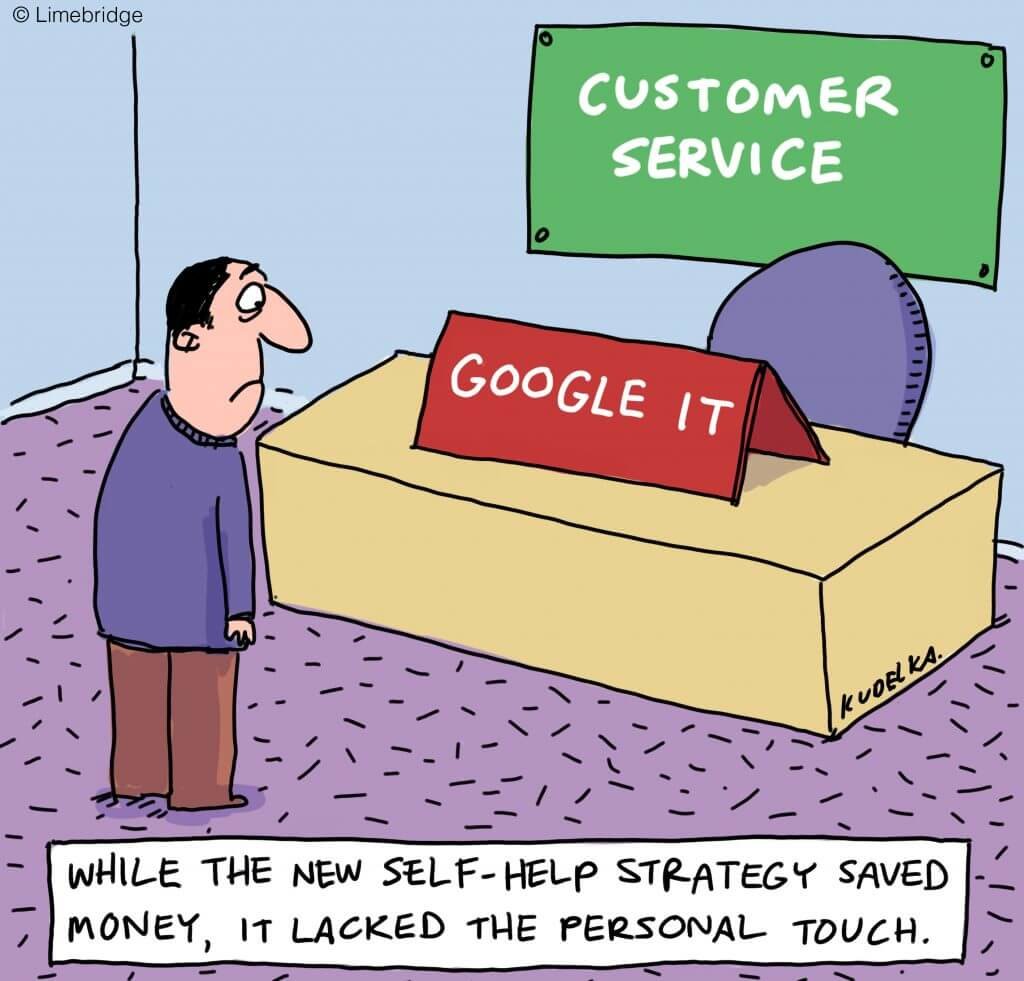
Self-service is another way that companies try to save money. There is even a meme related to this cartoon: LMGTFY (let me Google that for you). This is another area where in some instances FAQs make sense, but going too far can end up harming the experience. Getting caught in a self-service loop can be very frustrating if the user experience has not been designed properly.
Lesson learned: Ensure your self-service options are convenient, relevant, and trustworthy, but also leave an option for customers to get personal help should they need it.
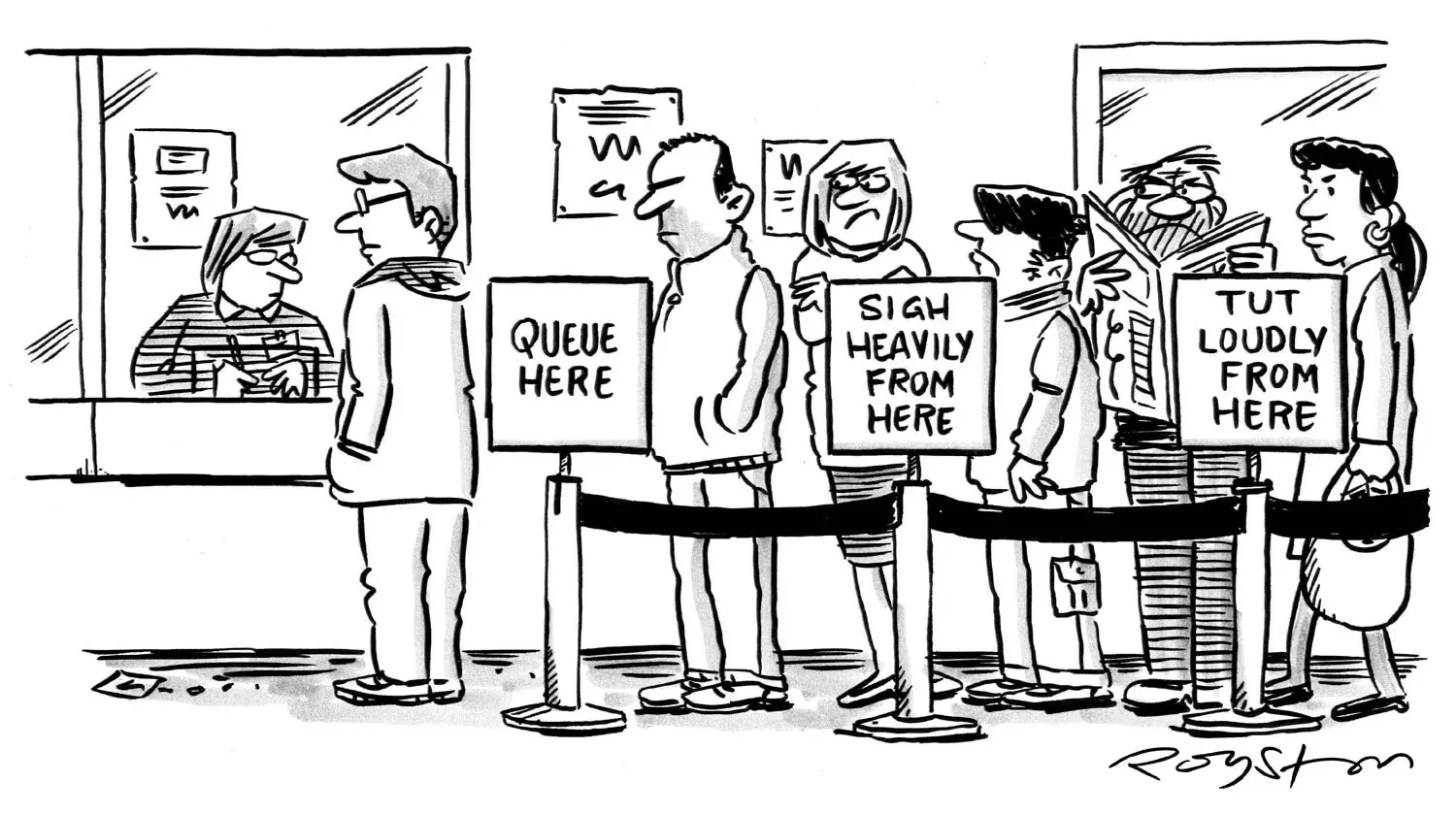
Wait times have always been an issue in customer experience. The thought of going to the DMV and taking a number can be known to cause uncontrollable twitching. Not only does it feel frustrating to wait for hours until your turn comes, but it can also be dehumanizing when you are just another number, just another transaction, or just another piece of paper that needs a stamp.
Lesson learned: Newer queuing techniques such as calling the customer back when it is their turn or handing them a buzzer so that they can get other things done to honor the customer’s time and show you care.
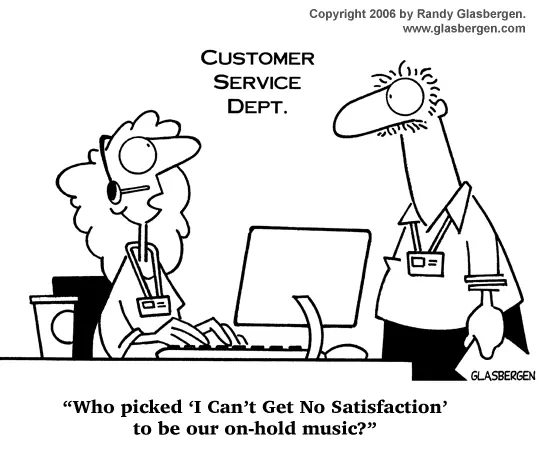
This is funny simply because “beautiful” hold music is most definitely in the ear of the beholder. Frequent interruptions with strong hints to go online for self-service are also an oldie but baddie during hold times, as these days most people would actually prefer to solve their own problem via self-service vs. wasting time on hold. UberConference’s meta hold music “I’m on hold,” by employee Alex Cornell went viral, helping both him and the company get some much-needed PR, but it also showcased a tongue-in-cheek nod to a light-hearted company culture.
Lesson learned: Of course keeping hold times short is a top priority, but keep in mind that the hold period is its own customer touch point, which can either enhance or detract from the overall experience.

Many companies invest in customer research but don’t actually do anything with it. There is no greater source of valuable data than the voice of the customer. An organization can track and measure until the cows come home, but nowhere else will you get the opportunity to speak to your customer as a human being, understand their needs, and come up with actionable solutions.
Lesson learned: The more you can bring your customer into your operations and process improvements, the more you can be responsive and even proactive in anticipating their needs.
We hope you’ve enjoyed a laugh or two with us as we present customer experience for what it truly is: a human endeavor that can sometimes go wrong but can always provide lessons when presented with a good sense of humor.
